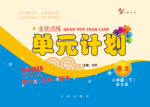题目内容
(D)
Inventor,physicist,surveyor,astronomer,biologist,artist…Robert Hooke was all these and more.Some say he Was the greatest experimental scientist of the 17th century.In the course of his work,he cooperated with famous men of science like Isaac Newton,and the great architect, Chrish@ler Wren.
Hoocke's early education began at home,under the guidance of his father.He entered Westnfinster School at the age of 13,and from there went to Oxford,where he came in contact with some of the best scientists in England.Hooke impressed them with his skills at designing experiments and inventing instruments.In 1662,at the age of 28, he was named Curator of
Experiments at the newly formed Royal Society of London—meaning that he was responsible for demonstrating new experiments at the society’s weekly meetings.Hooke accepted the job,even though he knew that the society had no money to pay him!
Watching living things through a microscope was one of his favorite pastimes.He invented a compound microscope for this purpose.One day while observing a cork(软木塞)under a microscope,he saw honeycomb-like structures.They were cells—the smallest units of life.In fact,it was Hooke who invented the term“cell” as the boxlike ceils of the cork reminded him of the cells of a monastery(修道院).
Another achievement Of Hook’s was his book Micrographi which introduced the.Enormous potential of the microscope.It contains fascinating drawings of the things he saw under the microscope.The book also includes,among other things,ideas on gravity,light and combustion(燃烧)that may have helped scientists like Newton when they were developing their own theories on these phenomena.
Hooke made valuable contributions to astronomy too.A crater(坑)on the moon is named after him in appreciation of his services to this branch of science.
68.Why possibly did Hooke accept the job as Curator of Experiments?
A. Because his parents couldn’t afford his education.
B.Because his family needed his support.
C.Because he wanted to please the famous scientists in England.
D.Because he liked designing experiments.
69.The cell got its name because of .
A.its use B.its shape C.Hooke’s favorites D.Hooke’s experiences
70.The last paragraph is to prove that .
A.Hooke was the greatest experimental scientist of the 17th century
B.Hooke was good at making discoveries
C.Hooke’s contributions were not limited to one field
D.Hooke was one of the greatest astronomers
71.The best title for the text may be .
A.The Greatest Scientist B.A Helper of Newtom
C.A Brief Introduction to Hooke D.Achievements of Hook
68---71 DBCC
【解析】略

 全优点练单元计划系列答案
全优点练单元计划系列答案